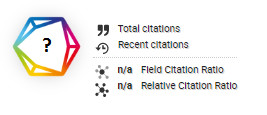Food Calorie Scale Equipped with Daily Calorie Needs Analysis
DOI:
https://doi.org/10.46984/sebatik.v28i2.2476Keywords:
Calories, Food, Scales, Loadcells, AutomaticAbstract
Humans require various types of nutritional intake to perform daily activities. The nutrients in food are converted into calories, which serve as a source of energy. Any calories not converted into energy are stored in the body as fat. Therefore, it is essential to monitor an individual's daily intake based on their caloric needs. Each type of food contains a different number of calories depending on its composition and quantity. Although numerous references provide calorie information for different foods, calculating the total daily calorie intake can be a complex process due to the variety of foods consumed. To simplify this process, a tool was developed to analyze daily calorie needs easily and efficiently. This tool uses a microcontroller to analyze and process data automatically, following a pre-programmed structure. The tool measures food weight using a load cell and incorporates a 4x4 keypad as an interface, making data entry more user-friendly. It is programmed to calculate the calorie content of 15 types of food based on their measured weight. The caloric value is determined by weighing the food and matching it with the programmed data. The measurement results showed a difference of 0.6 grams between the tool's weight measurement and the manufacturer's scale, with an R² value of 0.998, indicating high accuracy.
References
Abidin, M.S. (2023) “Desain Sistem Analisa Indeks Massa Tubuh, Kadar Lemak, Dan Kebutuhan Kalori Gizi Dengan Output Thermal Printer,” 27(2), hal. 1–9. Tersedia pada: https://doi.org/10.46984/sebatik.v27i2.0000.
Abidin, M.S., Kasih, R.U. dan Zulfadlih, L.O.S. (2022) “Helm Pintar Untuk Pemantauan Kadar Karbon Monoksida (Co) Dan Tingkat Kebisingan Suara Pada Daerah Industri Dan Pertambangan,” Sebatik, 26(2), hal. 502–508. Tersedia pada: https://doi.org/10.46984/sebatik.v26i2.2042.
Afif, U.M. dan Purnama, S. (2021) “Aplikasi Perhitungan Nilai Kalori Bahan Makanan Berbasis Anroid,” Journal of SPORT (Sport, Physical Education, Organization, Recreation, and Training), 5(2), hal. 55–64. Tersedia pada: https://doi.org/10.37058/sport.v5i2.2751.
Agsa, F., Hilman, F.T.S.P. dan Nugraha, R. (2021) “Perancangan Alat Hitung Nutrisi Makanan Berbasis Arduino Uno Design of Food Nutrition Counting Tool Based on Arduino Uno,” e-Proceeding of Engineering, 8(4), hal. 3897–3907.
Arsita Harnawati, R. dan Adevia Maulidya Chikmah (2024) “Menejemen Makan Tinggi Kalori Terhadap Peningkatan Lila (Lingkar Lengan Atas) Pada Ibu Hamil Kek (Kekurangan Energi Kronik),” Jurnal Kesehatan Masyarakat Indonesia (JKMI), 1(3), hal. 1–5. Tersedia pada: https://doi.org/10.62017/jkmi.v1i3.1008.
Asih, L.D. dan Widyastiti, M. (2016) “Meminimumkan Jumlah Kalori Di Dalam Tubuh Dengan Memperhitungkan Asupan Makanan Dan Aktivitas Menggunakan Linear Programming,” Jurnal Ekologia, 16(1), hal. 38–44.
Bagus, R., Agustine, L. dan Lestariningsih, D. (2019) “Alat Ukur Timbangan Badan dan Tinggi Badan Otomatis Berbasis Arduino Dengan Output Suara,” Widya Teknik, 18(2), hal. 84–89. Tersedia pada: https://doi.org/10.33508/wt.v18i2.1921.
Budiarti, E. dkk. (2023) “Meningkatkan Pemahaman Pentingnya Makan Makanan Bergizi Seimbang Melalui Kegiatan Makan Bersama Di Ra Al Fata Rokan Hulu,” HEALTHY : Jurnal Inovasi Riset Ilmu Kesehatan, 1(4), hal. 218–229. Tersedia pada: https://doi.org/10.51878/healthy.v1i4.1817.
Dedy Kasingku, J. (2023) “Peran Makanan Sehat Dalam Meningkatkan Kesehatan Fisik dan Kerohanian Pelajar,” Jurnal Pendidikan Mandala, 8(3), hal. 853–859. Tersedia pada: http://ejournal.mandalanursa.org/index.php/JUPE/index.
Fahanani, A.F. dkk. (2022) “Pengembangan Aplikasi Bowll Untuk Perhitungan Kebutuhan Kalori Dengan Metode Waterfall,” Jurnal Informatika Polinema, 9(1), hal. 103–110. Tersedia pada: https://doi.org/10.33795/jip.v9i1.1141.
Febrianta, M.A. (2023) “Jurnal Aplikasi Menghitung Kebutuhan Kalori Perhari Dengan Rumus Hariss-Benedict Berbasis Java Netbeans,” Jurnal SANTI - Sistem Informasi dan Teknik Informasi, 1(3), hal. 1–8. Tersedia pada: https://doi.org/10.58794/santi.v1i3.331.
Hermansyah, M. dan Mas’ud, M.I. (2018) “Penentuan Menu Makanan Dalam Pemenuhan Kebutuhan Kalori Buruh Pabrik Dengan Analisis Detak Jantung,” Jurnal Rekayasa Sistem Industri, 7(1), hal. 11. Tersedia pada: https://doi.org/10.26593/jrsi.v7i1.2371.11-20.
Hikmah, A.I., Anwar, K. dan Sophia, E. (2020) “Kalori Komposisi Makanan Untuk Asupan Gizi Anak Usia 2-10 Tahun Menggunkan Metode Analitycal Hierarchy Process,” Jurnal Teknologi Informasi, 11(2), hal. 63–67. Tersedia pada: https://doi.org/10.36382/jti-tki.v11i2.498.
Mukhammad, Y., Santika, A. dan Haryuni, S. (2022) “Analisis Akurasi Modul Amplifier HX711 untuk Timbangan Bayi,” Medika Teknika : Jurnal Teknik Elektromedik Indonesia, 4(1), hal. 24–28. Tersedia pada: https://doi.org/10.18196/mt.v4i1.15148.
Nuttall, F.Q. (2015) “Body mass index: Obesity, BMI, and health: A critical review,” Nutrition Today, 50(3), hal. 117–128. Tersedia pada: https://doi.org/10.1097/NT.0000000000000092.
Santya, T. dkk. (2019) “Sistem Pakar Menentukan Maksimal Kalori Harian Berbasis Mobile,” Innovation in Research of Informatics (INNOVATICS), 1(2), hal. 70–77. Tersedia pada: https://doi.org/10.37058/innovatics.v1i2.920.
Sastra, I.M.H. dkk. (2023) “Website Pintar Untuk Diet Harian Dengan Menggunakan Metode Fuzzy Tsukamoto,” JTKSI (Jurnal Teknologi Komputer dan Sistem Informasi), 6(2), hal. 119. Tersedia pada: https://doi.org/10.56327/jtksi.v6i2.1414.
Sugiatmi dkk. (2019) “Peningkatan pengetahuan tentang kegemukan dan obesitas pada pengasuh pondok pesantren igbs darul marhamah desa jatisari kecamatan cileungsi kabupaten bogor jawa barat,” Pengabdian Masyarakat, 1(September), hal. 1–5. Tersedia pada: https://jurnal.umj.ac.id/index.php/semnaskat/article/viewFile/5434/3644.
Verdiana, L. dan Muniroh, L. (2022) “Kebiasaan sarapan berhubungan dengan konsentrasi belajar pada siswa sdn sukoharjo i malang,” hal. 14–20.
Widianto, S.R. (2017) “Rancang Bangun Aplikasi Telemedika untuk Pasien Diabetes Berbasis Platform iOS,” Multinetics, 3(1), hal. 20. Tersedia pada: https://doi.org/10.32722/vol3.no1.2017.pp20-26.
Wijaya, O.G.M., Meiliana, M. dan Lestari, Y.N. (2021) “Pentingnya Pengetahuan Gizi Untuk Asupan Makan Yang Optimal Pada Atlet Sepak Bola,” Nutrizione: Nutrition Research And Development Journal, 1(2), hal. 22–33. Tersedia pada: https://doi.org/10.15294/nutrizione.v1i2.51832.
Downloads
Published
How to Cite
Issue
Section
License
Copyright (c) 2024 Muhammad Sainal Abidin, Ridia Utami Kasih , Desak Ketut Sutiari

This work is licensed under a Creative Commons Attribution 4.0 International License.
Authors retain all their rights to the published works, such as (but not limited to) the following rights; Copyright and other proprietary rights relating to the article, such as patent rights, The right to use the substance of the article in own future works, including lectures and books, The right to reproduce the article for own purposes, The right to self-archive the article








